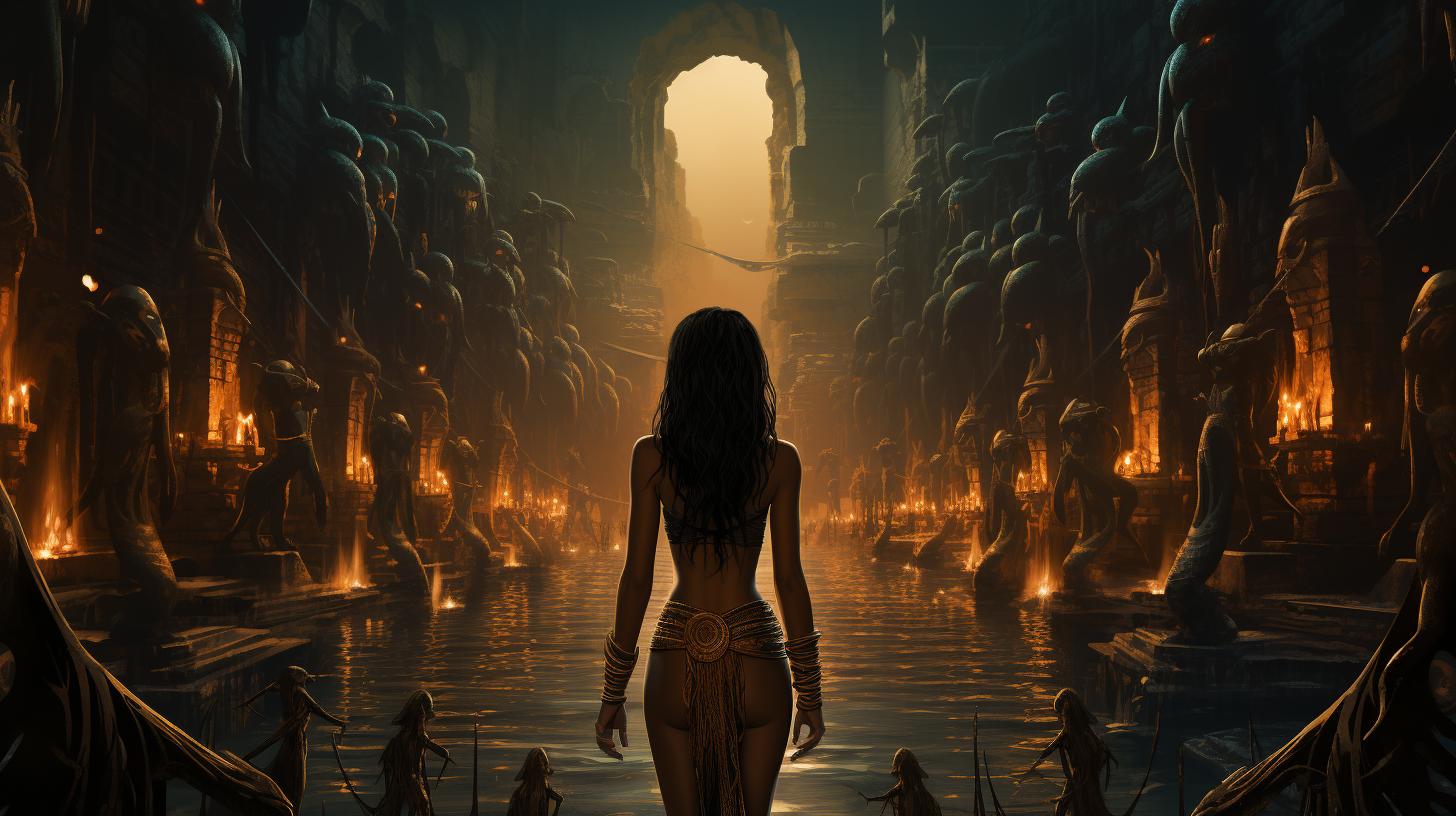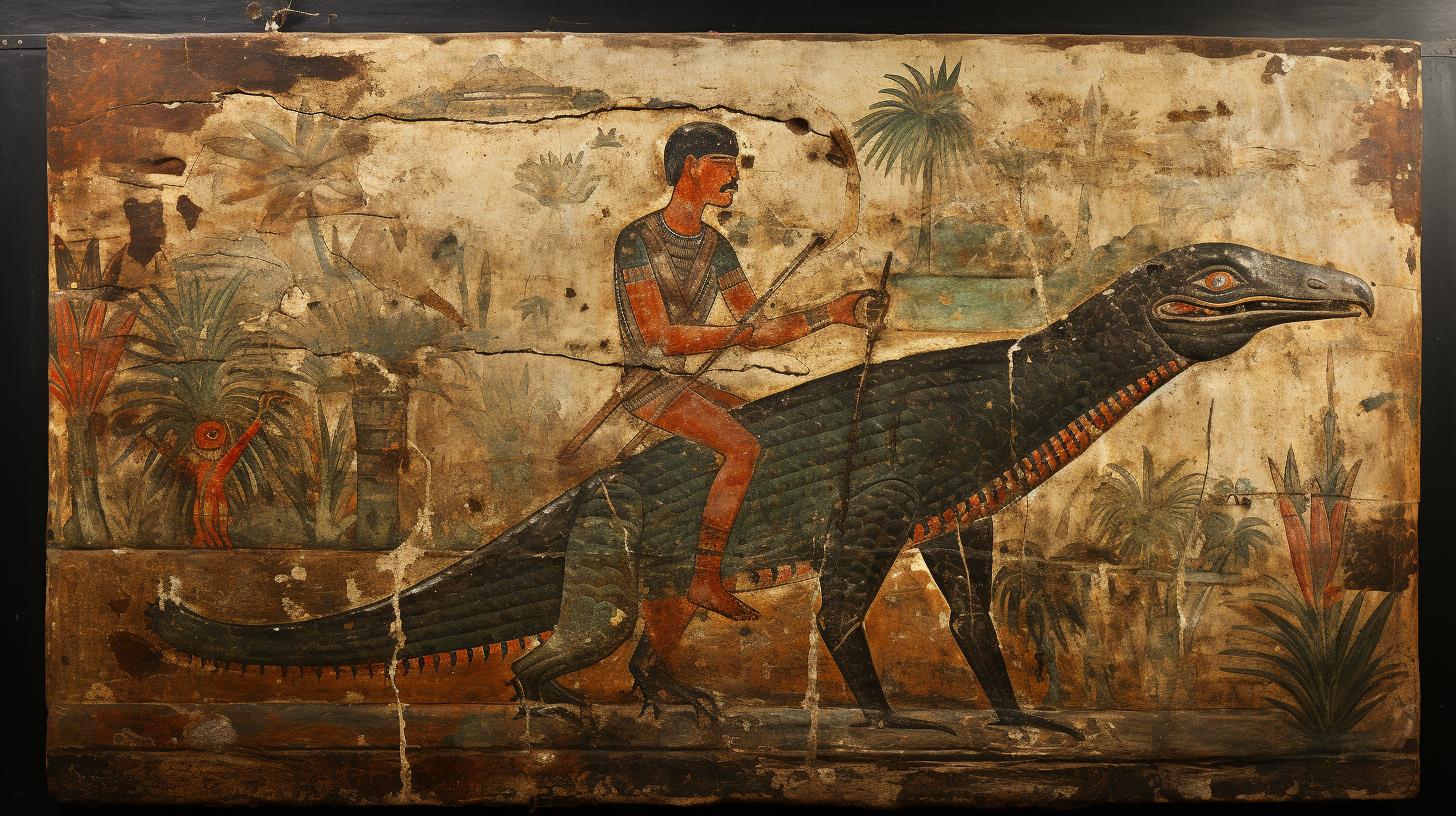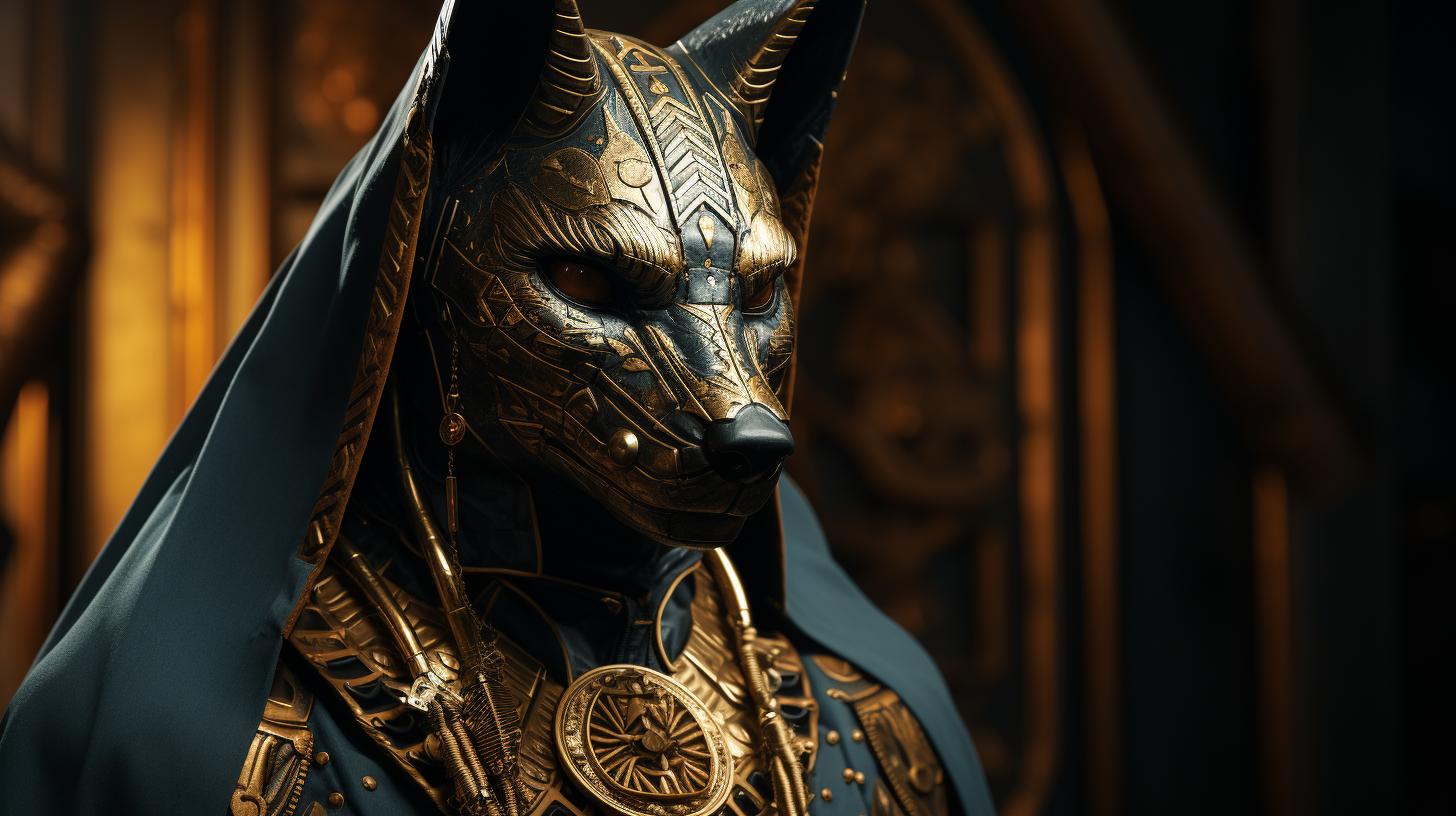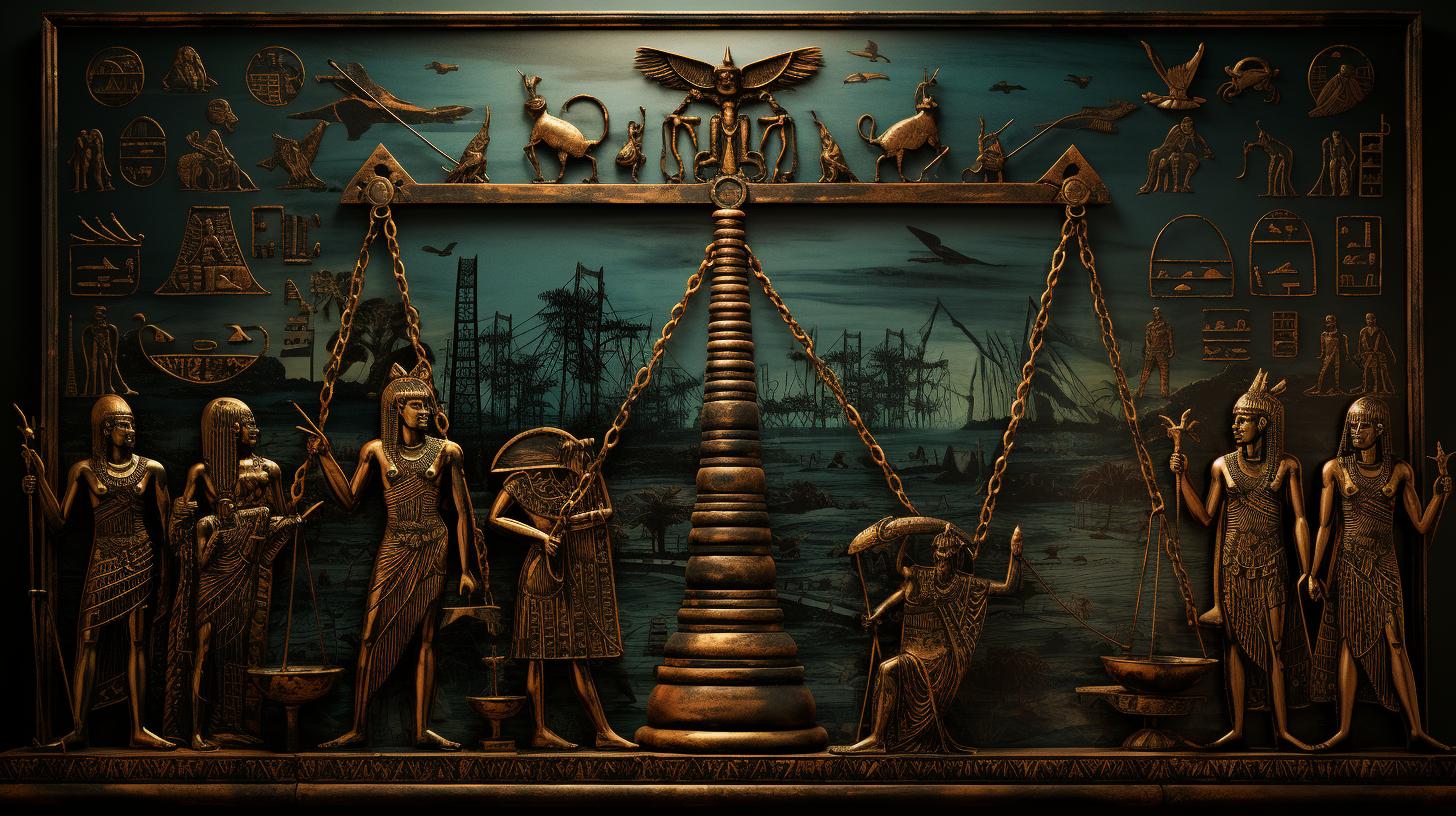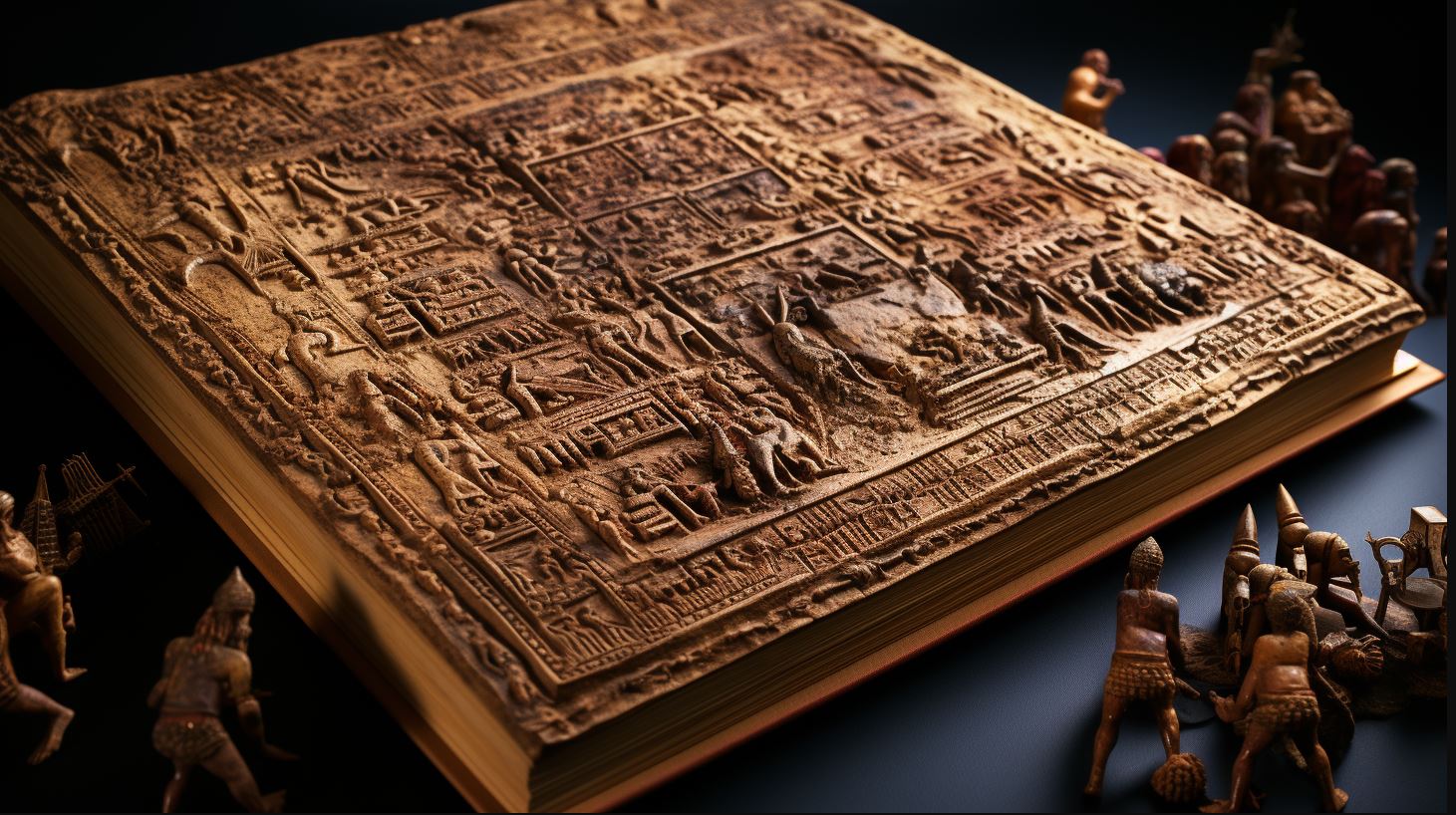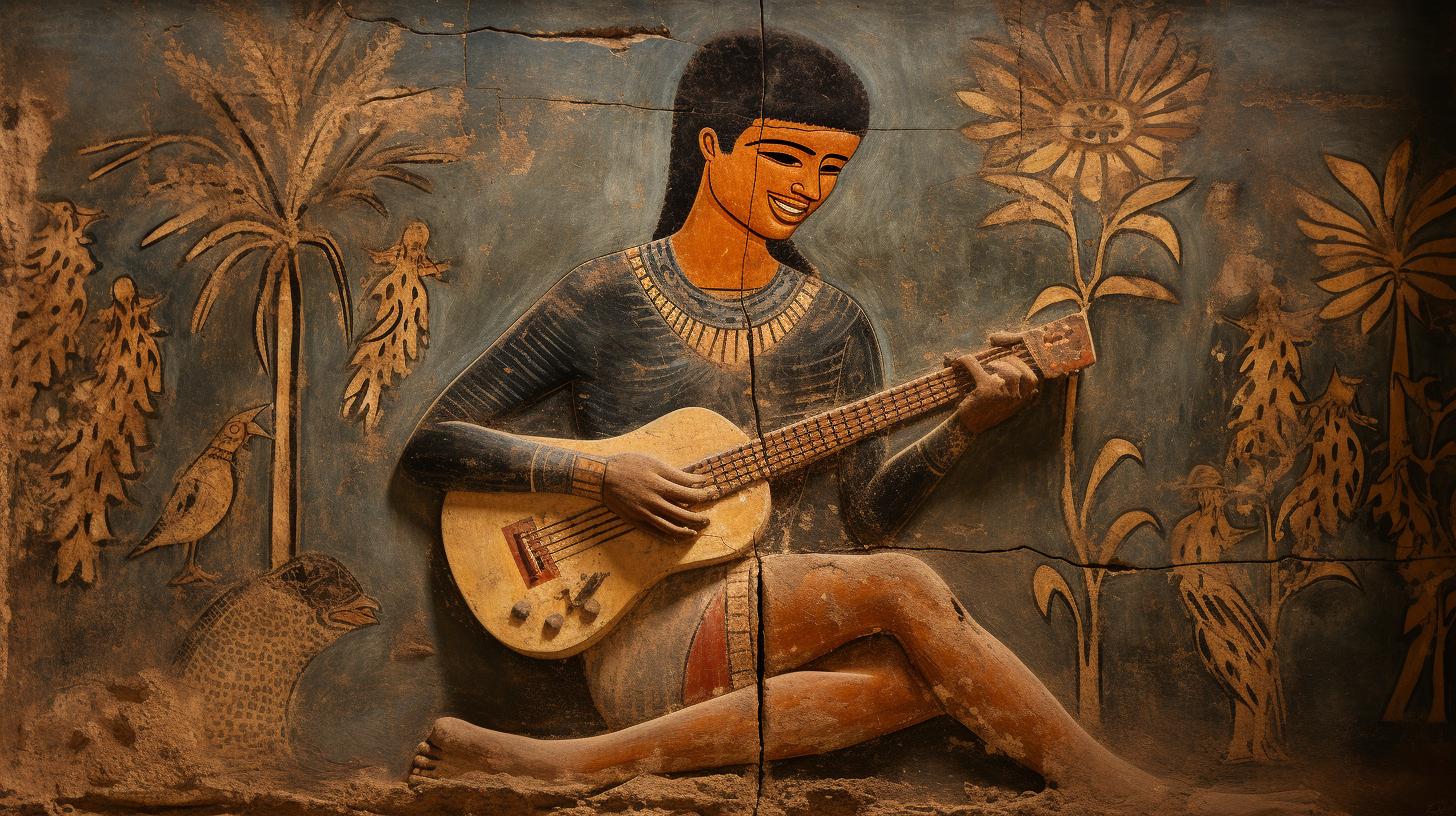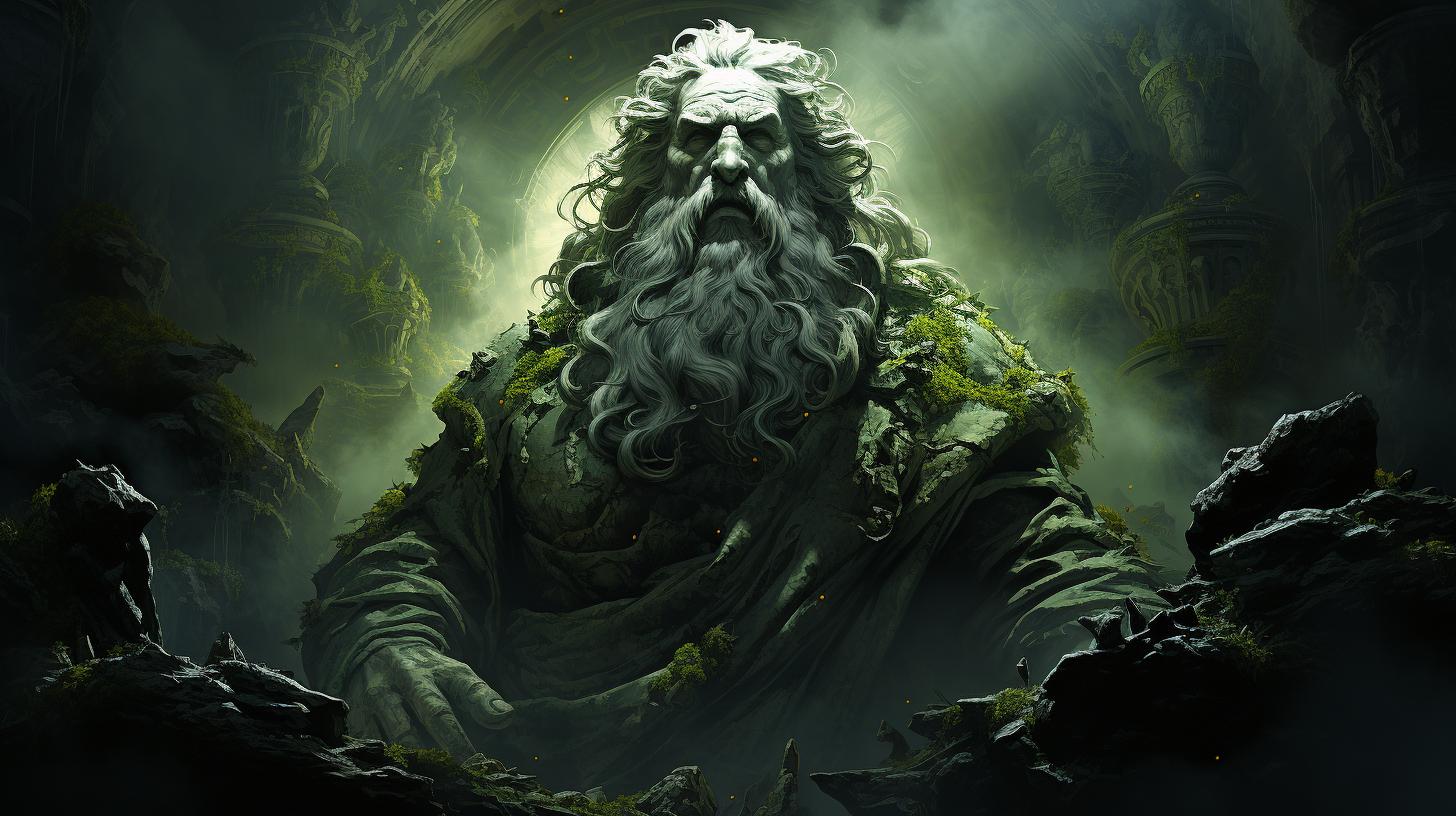Egyptian Afterlife Journey Step by Step: A Guide to the Ancient Egyptian Beliefs on the Afterlife
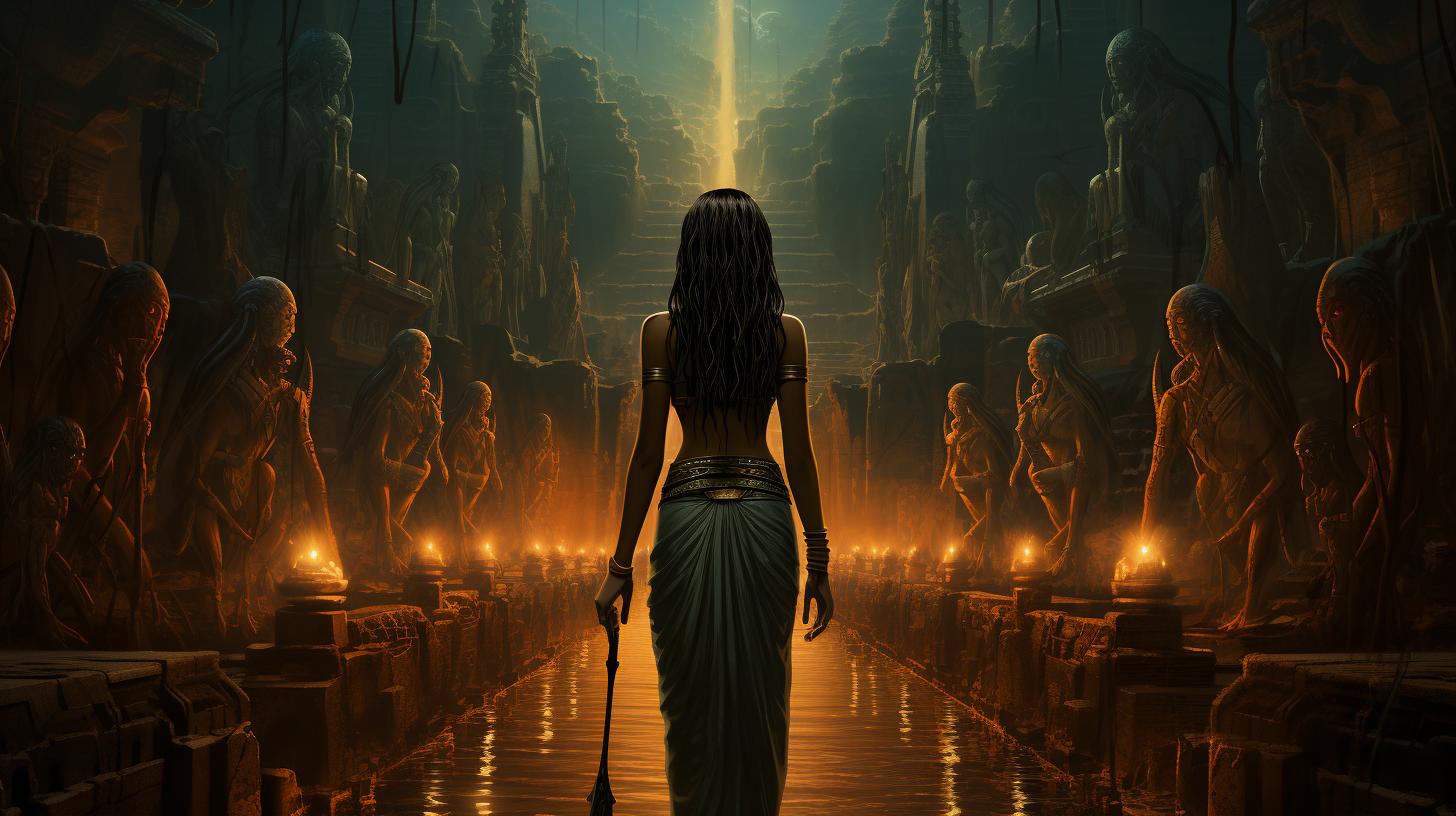
The ancient Egyptian belief in the afterlife was a central aspect of their culture. They believed in a journey to the afterlife that began at the moment of death and was guided by Anubis. In the Hall of Judgment, the heart was weighed against Ma’at’s feather to determine one’s afterlife destination.
Mummification and the Opening of the Mouth ceremony were also important for a successful transition to the afterlife. Explore the Egyptian Afterlife Journey Step by Step and discover the myths and rituals of this intriguing culture.
The Journey to the Afterlife: Departure from Earth to Duat
The ancient Egyptians believed that the journey to the afterlife began at the moment of death. The soul would separate from the body and travel to the underworld, known as Duat.
Duat was a dangerous and complex realm, and the journey required careful preparation and guidance.
Before the journey could begin, the body had to be mummified and prepared for burial. The funeral procession would make its way to the tomb, where the body would be placed in a sarcophagus.
This was just the first step in the long journey to the afterlife.
Once the soul had separated from the body, it would face a series of challenges and obstacles on its way to Duat. The soul would encounter dangerous creatures, cross treacherous rivers, and navigate through a maze of tunnels and passages.
- The journey required the help of several deities, such as Anubis, who would guide the soul through the underworld.
- The soul had to recite a series of spells and incantations to ward off evil spirits and navigate through the dangers of Duat.
- The journey also required the successful passage through the seven gates of the underworld, each guarded by a different deity.
Once the soul had successfully navigated the dangers of Duat, it would arrive at the Hall of Judgment, where its heart would be weighed against the feather of Ma’at.
This was a critical moment in the journey, as the fate of the soul would be determined by this weighing process. If the heart was found to be pure, the soul would be granted entrance into the afterlife.
The journey to the afterlife was a fundamental part of ancient Egyptian religion and culture. It required careful preparation, the help of deities, and the successful navigation of challenging obstacles and dangers.
Understanding the journey to Duat provides insight into the ancient Egyptians’ beliefs about the afterlife and what they believed was required for a successful transition to the next world.
Upon death, the soul of an Egyptian began its journey to the afterlife, guided by Anubis. In the Hall of Judgment, the heart of the deceased was weighed against the feather of Ma’at, the goddess of truth and justice.
The scales symbolized the balance between good and evil, and dishonest souls would be devoured by Ammut, the devourer of the dead.
The weighing of the heart was a crucial moment for the deceased, as it would determine the afterlife destination. People wanted to ensure that their souls would pass the test, so they followed a virtuous life, paid their debts, and were buried with possessions to aid their journey.
This belief emphasized the importance of living an ethical life without harming others. Since there is no other chance to gain entrance to the afterlife, the weighing of the heart must be passed.
The process involved in mummification and the Opening of the Mouth ceremony also prepared the body and soul for this judgment.
Feelings of relief, peace, joy and blissfulness were experienced in the Field of Reeds, where souls could live comfortably among other virtuous souls. For those who did not pass the test, the Embalming Hall symbolized the Hell, where they would be left forever to rot.
- Anubis, the guide of the dead
- Ma’at and the importance of truth and ethics
- The Hall of Judgment and the symbolism behind the scales
- Importance of passing the test and the emphasis on a virtuous life
- Mummification and its connection to the afterlife journey
- Opening of the Mouth ceremony and how it prepares the soul and body for the journey
- Afterlife destinations based on the judgment
- The Field of Reeds, ideal afterlife for virtuous people
- Hell, the punishment for unjust souls
Overall, the belief in the afterlife played a significant role in the culture of ancient Egypt, and the journey of the soul was taken very seriously.
The concepts of truth, ethics, and justice were emphasized heavily in the society, as they were the ultimate determinants of the soul’s afterlife destination.
The Weighing of the Heart: Determining the Afterlife Destination
In ancient Egyptian culture, the journey to the afterlife was taken seriously, and every soul’s fate was determined by a judgment consisting of a thorough examination of their life. At this judgment, the heart of the deceased was weighed against Ma’at’s feather, the goddess of truth, order, and justice.
This weighing of the heart was a crucial moment, as the heart needed to be as light as the feather to gain entry to the Field of Reeds, the ideal afterlife.
This judgment process was overseen by the god of the afterlife, Osiris, who ruled over the land of the dead. Anubis, the jackal-headed god of mummification, escorted the soul to the Hall of Judgment and presided over the weighing of the heart.
The goddess Ma’at was responsible for keeping the balance and ensuring that justice was done.
The exact process of the weighing of the heart ceremony is not fully known, but it is believed that the deceased would recite prayers and magical spells to aid them in their journey to the afterlife and emphasize their purity and worthy deeds.
The heart would be placed on one side of a scale, while Ma’at’s feather was placed on the other, and then the feather would be weighed against the heart to measure the heart’s morality.
The weighing of the heart represented a life’s purpose and morality, and it determined the deceased’s fate. A favorable judgment meant eternal life in the Field of Reeds, while an unfavorable one meant eternal punishment in the duat underworld.
The process of weighing is an essential element of ancient Egyptian beliefs in the afterlife that still fascinates and intrigues modern civilization.
- The heart of the deceased was weighed against the goddess Ma’at’s feather.
- If the heart weighed the same as the feather, the soul would enter the Field of Reeds.
- If the heart was heavier than the feather, the soul would be consumed by Ammut.
- Oversaw by the god of the afterlife, Osiris.
- Anubis, the jackal-headed god, was responsible for escorting the soul to the Hall of Judgment and presiding over the weighing of the heart.
- Ma’at was responsible for keeping the balance and ensuring that justice was done.
The Field of Reeds: The Ideal Afterlife
The ancient Egyptians created a vision of paradise called the Field of Reeds, which was the perfect afterlife destination for the just and righteous.
This utopian realm promised eternal happiness, peace, and prosperity to those who were deemed worthy enough to advance to this stage. Below are the key features that describe the Field of Reeds:
- The Field of Reeds was a lush, green landscape, full of fountains, flowers, and fruit trees.
The temperature was always perfect, and a gentle breeze carried the scent of exotic flowers and plants.
- The just and righteous lived in magnificent mansions, equipped with all the luxuries and comforts imaginable, surrounded by fields of wheat, barley and other crops.
There was no disease, no poverty, and no conflict.
- Citizens of the Field of Reeds enjoyed delicious wines and feasts, accompanied by heavenly music and the dancing of beautiful maidens. All needs and desires were fulfilled, without work or effort.
- The afterlife existence in this realm was marked by an absence of death and decay.
Life was eternal and rejuvenating, and there was always a sense of peace and serenity. The citizens of the Field of Reeds were surrounded by their loved ones, including pets and other animals who had also been mummified and buried with them.
The Egyptians believed that while physical death was inevitable, immortality and eternal happiness were attainable.
The Field of Reeds was the ultimate reward for the righteous, and the idealized version of paradise, a place where the spirit could dwell in peace and contentment forever.
Hell: The Punishment for Unjust Souls
In ancient Egyptian belief, souls of the wicked were punished in the afterlife. The ancient Egyptians believed in a complex underworld, known as Duat, where the souls ventured after death and were subject to the judgment of Osiris. According to the beliefs, the wicked souls would be dealt with in the scorching depths of Hell, also known as The Place of Annihilation.
The Place of Annihilation was reserved for the worst offenders, and the punishment was inflicted by the goddess Ammit and the god Sekhmet. The souls of those who committed heinous crimes or were deemed unworthy to pass through judgment were punished with various forms of torture and agony.
The wicked souls would be consumed by fire and ash, their hearts ripped out and devoured by Ammit. Other forms of punishment included being impaled on spears, decapitated, and thrown into pits of molten lava.
The torment was endless, without hope of redemption, and the souls would suffer for all eternity. The Egyptians believed that the punishment was necessary to maintain order in the afterlife and that it was just based on the severity of the sins committed by the individual.
It was believed that the souls of the righteous went to the Field of Reeds, while those of the wicked would suffer torment in the Place of Annihilation. The Egyptians believed that the judgment of the soul was an important part of the afterlife journey and that the punishment was necessary to maintain Ma’at, the principle of truth, and balance.
In conclusion, the punishment of the wicked in the afterlife was a fundamental part of ancient Egyptian beliefs. The punishment was harsh and designed to maintain order and balance in the afterlife.
The punishment was inflicted on those who committed heinous crimes or were deemed unworthy to pass through judgment. The belief in the afterlife and the judgment of the soul was a central part of ancient Egyptian life, something that is still fascinating people to this day.
The Role of Mummification for a Successful Afterlife
In ancient Egypt, mummification played a crucial role in ensuring a successful afterlife. It was believed that without this process, the soul could not properly reunite with the body after death.
Mummification was performed by specialized priests, who carefully extracted the organs and performed rituals to preserve the body. The organs were placed in canopic jars, which were then buried with the mummy.
- The brain was removed by pulling it out through the nose using a hook, as it was believed to be of little use in the afterlife
- The liver, lungs, stomach, and intestines were removed and placed in canopic jars, each protected by a different god
- The body was then coated in natron, a type of salt, to dry it out and prevent decay
- The body was then wrapped in linen bandages, which were soaked in resin to help preserve the body
The process of mummification was extensive and could take several months to complete.
It was also expensive and only affordable to the wealthy.
Mummification was not only important for the preservation of the body but was also believed to have spiritual significance. The attention given to preparing the body symbolized respect for the deceased and helped ensure a successful afterlife.
Furthermore, the mummification process was closely linked to the Opening of the Mouth ceremony, which was performed just before burial. This ceremony aimed to restore the senses of the mummy, allowing it to eat, drink, breathe, and speak in the afterlife.
Overall, the role of mummification was vital to the ancient Egyptian beliefs on the afterlife. It allowed the soul to fully reunite with the body, ensured a successful afterlife, and symbolized respect for the deceased.
The Opening of the Mouth Ceremony: Awakening the Senses
The ancient Egyptians believed that the soul of the deceased needed to be awakened to begin its journey in the afterlife. The Opening of the Mouth ceremony was a ritual that aimed to restore the senses of the mummified body to allow the deceased to perceive the world around them.
The ceremony was performed by a priest and involved a series of symbolic actions, such as touching the mummy’s mouth and eyes with special tools, reciting spells, and making offerings. It was believed that this ceremony would enable the soul to eat, drink, and breathe in the afterlife.
One of the most important elements of the ceremony was the use of the ‘magical mallet,’ which was hit against the mummy’s lips to symbolize the opening of the mouth. This action was believed to release the soul from the body and allow it to embark on its journey.
The ceremony also included the presentation of offerings, such as food and drinks, which were believed to nourish the soul. The priest would recite spells to ensure the proper functioning of the senses, including sight, smell, touch, and hearing.
The Opening of the Mouth ceremony was an essential part of the Egyptian funeral ritual, as it was believed to prepare the deceased for their journey in the afterlife. The ceremony was performed in conjunction with other rituals, such as mummification and the Weighing of the Heart.
Today, visitors to Egypt can witness the reconstructed Opening of the Mouth ceremony in some of the temples and tombs. It is a unique opportunity to experience the myths and rituals of this ancient civilization and gain an insight into their beliefs about the afterlife.
The Seven Gates of the Underworld and the Book of the Dead
The journey to the Egyptian afterlife was a perilous one, with the afterlife destination determined by the Weighing of the Heart in the Hall of Judgment. To reach this final destination, the deceased had to pass through the Seven Gates of the Underworld, each one guarded by a fearsome creature.
Each creature required its own unique spell, recited by the deceased to ensure safe passage.
- The first gate was guarded by a serpent-headed goddess named Ammit, who devoured the souls of those deemed unworthy.
- The second gate was guarded by a pair of lions named Aker, who required their own unique spell for safe passage.
- The third gate was guarded by the god of the dead, Osiris, who required the recitation of a spell to pass.
- The fourth gate was guarded by the jackal-headed god of mummification, Anubis, who required purification before allowing passage.
- The fifth gate was guarded by the ibis-headed god of wisdom, Thoth, who required knowledge of specific spells.
- The sixth gate was guarded by a pair of falcons named Hemuset, who required purity and knowledge of specific spells.
- The seventh and final gate was guarded by the goddess of protection, Nut, who required the deceased to have successfully navigated the previous six gates before allowing passage into the afterlife.
After successfully passing through the Seven Gates, the deceased entered the afterlife and faced the final judgment.
To prepare for this judgment, the deceased was buried with the Book of the Dead, which contained spells and instructions for navigating the afterlife. The Book of the Dead was typically customized for each individual, with spells tailored to their specific needs.
It was essential for a successful afterlife, as the spells within were meant to protect the deceased from forces that wished to harm them in the afterlife.
While the journey to the afterlife was long and perilous, it was also full of fascinating traditions and beliefs. Understanding the intricacies of the Seven Gates of the Underworld and the Book of the Dead provides a glimpse into the complex and fascinating culture of ancient Egypt.
A Guide to Visiting Ancient Egyptian Afterlife Sites: Luxor and Aswan
Exploring the ancient Egyptian afterlife journey step by step can be a profound and life-changing experience. A great way to immerse yourself in this extraordinary culture is to visit the sites where these beliefs were brought to life.
Luxor and Aswan are both cities in Egypt that played a significant role in the afterlife journey. Luxor is located in Upper Egypt and is home to the famous Valley of the Kings and the Tombs of the Nobles.
Aswan, also in Upper Egypt, boasts the beautiful Temple of Philae, which was dedicated to the goddess Isis. Be sure to pack comfortable shoes and sunscreen as these sites can involve a lot of walking in hot temperatures.
- Valley of the Kings: This royal burial ground is located on the West Bank of the Nile, opposite Luxor, and has been the site of excavations for centuries. Discover the fascinating tombs of pharaohs and their consorts, including the Tomb of Tutankhamun and the Tomb of Ramses III.
- Tombs of the Nobles: Located in Luxor’s West Bank, the Tombs of the Nobles are an incredible display of the colorful and intricate art of the ancient Egyptians.
These tombs were constructed for nobles and their families, rather than the pharaohs, and offer a glimpse of everyday life in ancient times.
- Temple of Philae: Located on an island in the Nile River in Aswan, the Temple of Philae was dedicated to the goddess Isis and was the last temple built in the classical Egyptian style.
The temple was moved to its current location when the High Dam was constructed in the 1960s.
Visiting these ancient Egyptian sites is a unique and enriching experience that connects you to a fascinating culture and history.
Be sure to hire a knowledgeable guide to fully appreciate the significance of these incredible sites and bring the journey to the afterlife to life.
Egyptian Mythology: The Gods of the Afterlife and Judgment
The ancient Egyptians had a complex belief system about the afterlife which included a pantheon of gods responsible for various aspects of death and judgment. These gods played a crucial role in determining an individual’s fate in the afterlife and were often depicted in funerary art and texts.
Anubis
Anubis was one of the most important gods of the afterlife journey. He was the god of embalming and mummification and was responsible for guiding the dead through the various stages of the journey in the underworld.
Anubis was often depicted as a jackal or a man with a jackal’s head and was associated with both death and rebirth.
Ma’at
The goddess Ma’at represented the concept of balance and harmony in the afterlife. She was responsible for weighing the heart of the deceased against a feather in the Hall of Judgment.
If the heart was lighter than the feather, the deceased was allowed to pass into the afterlife. Ma’at was often depicted as a woman with a feather on her head.
Osiris
Osiris was the god of the afterlife and ruler of the underworld. He was responsible for judging the deceased and determining their final resting place. If the deceased was found to be just and righteous, they were granted entry into the Field of Reeds, an idyllic paradise that was the ideal afterlife destination.
Osiris was often depicted as a mummified king wearing the Atef crown.
Thoth
Thoth was the god of knowledge and writing and was responsible for recording the judgment of the deceased. He was often depicted as a man with the head of an ibis or a baboon and was associated with the moon and the measurement of time.
Ammut
Ammut was the goddess of punishment and she was responsible for devouring the hearts of those deemed unworthy of the afterlife. She was often depicted as a composite creature with the head of a crocodile, the body of a lion, and the hindquarters of a hippopotamus.
The Egyptian pantheon of gods was vast and complex, and each had their own roles and responsibilities in the afterlife journey. Understanding their roles and significance is essential to understanding the beliefs and rituals of ancient Egyptian culture.
Nile Cruises and Other Tours to Explore the Ancient Egyptian Afterlife
Exploring the ancient Egyptian afterlife can be an unforgettable experience, and one of the best ways to do so is by taking a Nile cruise. A Nile cruise is a luxurious and comfortable way to visit several ancient Egyptian sites at once and enjoy the Nile river’s stunning views.
- Luxor: On the east bank of the Nile, you can visit the Karnak and Luxor Temples, two of the most impressive in the country. On the west bank, you can explore the Valley of the Kings, where the pharaohs were buried, and the Temple of Hatshepsut, one of the few temples built by a female pharaoh.
- Aswan: Aswan is an idyllic city that allows you to see the Abu Simbel Temple, one of the most impressive and best-preserved temples in Egypt.
Here, you can also visit the Philae Temple, an island temple linked to the goddess Isis.
If you prefer a land tour, you can explore several other sites related to the ancient Egyptian afterlife, such as Cairo’s Egyptian Museum, where you can see the famous King Tutankhamun’s treasures.
Also, you can visit the Saqqara, where the oldest pyramids were built and the ancient capital of Memphis.
Another way to explore the ancient Egyptian afterlife is by booking a guided tour. A guide can help you understand the stories behind the ancient sites and guide you through the different stages of the journey to the afterlife.
In summary, there are several options to explore the ancient Egyptian afterlife, from luxurious Nile cruises to land tours or guided tours. Whichever you choose, your experience is sure to be unforgettable, filled with fascinating stories and mesmerizing landscapes.
Final Resting Place: The Importance of Tombs and Burials in Ancient Egypt.
In Ancient Egypt, the afterlife was seen as a continuation of life on Earth, with the body and soul able to reunite in the next world. A proper burial was essential to ensure the body could be preserved and the soul could find its way back to the physical form.
Here are some key aspects of tombs and burials in Ancient Egypt that showcase the importance of the final resting place:
- Mummification: Mummification was a crucial process in Ancient Egypt, with the body being carefully embalmed and wrapped to slow down the decomposition process.
It was believed that this process would help the soul successfully pass through the afterlife journey and join the gods in the next world.
- Funerary Goods: Tombs were filled with goods, including food, drink, pottery, and other items needed in the afterlife.
The wealthy and elite would often bury their loved ones with valuable items such as jewelry, gold, and even boats. These goods were meant to ensure the comfort and success of the deceased in the afterlife.
- Pyramids: The Great Pyramids of Giza are some of the most recognizable structures from Ancient Egypt, and they were built as tombs for the pharaohs.
These massive structures were meant to protect and honor the body and soul of the pharaoh as they journeyed to the afterlife.
Tombs and burials were not only important for the individual but also for the family and the society.
Building elaborate and impressive tombs signaled the status and importance of the deceased to their community. It also allowed for their memory and legacy to be preserved, as well as access to their funerary goods for future generations.
The importance of tombs and burials in Ancient Egypt is a testament to the significance of the afterlife and the belief in the continuation of life beyond death……

